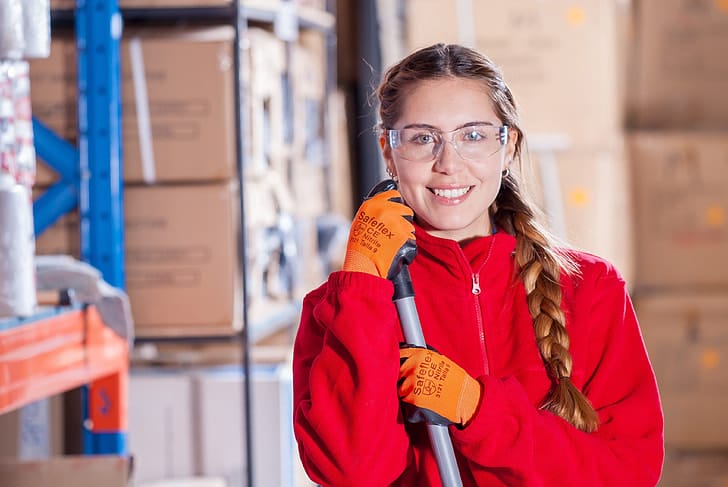
Warehouse gloves are an essential type of personal protective equipment (PPE) specifically designed to protect workers’ hands during various tasks in a warehouse environment. These gloves act as a critical barrier, safeguarding hands from a wide range of potential hazards commonly encountered in warehouses, such as sharp edges, heavy materials, chemical exposure, and extreme temperatures. By wearing the appropriate gloves, workers can reduce the risk of injuries like cuts, abrasions, burns, or chemical irritation, ensuring a safer working environment.
Additionally, warehouse gloves are crafted not only for protection but also for functionality. Modern designs ensure a balance between safety and dexterity, allowing workers to handle tools, equipment, and materials with precision and ease. Their ergonomic features and material choices often focus on providing comfort during prolonged use, minimizing hand fatigue, and enhancing productivity.
By being tailored to address specific risks and tasks, warehouse gloves play a pivotal role in maintaining workplace safety, efficiency, and compliance with safety regulations.
What is the use of gloves in a warehouse?
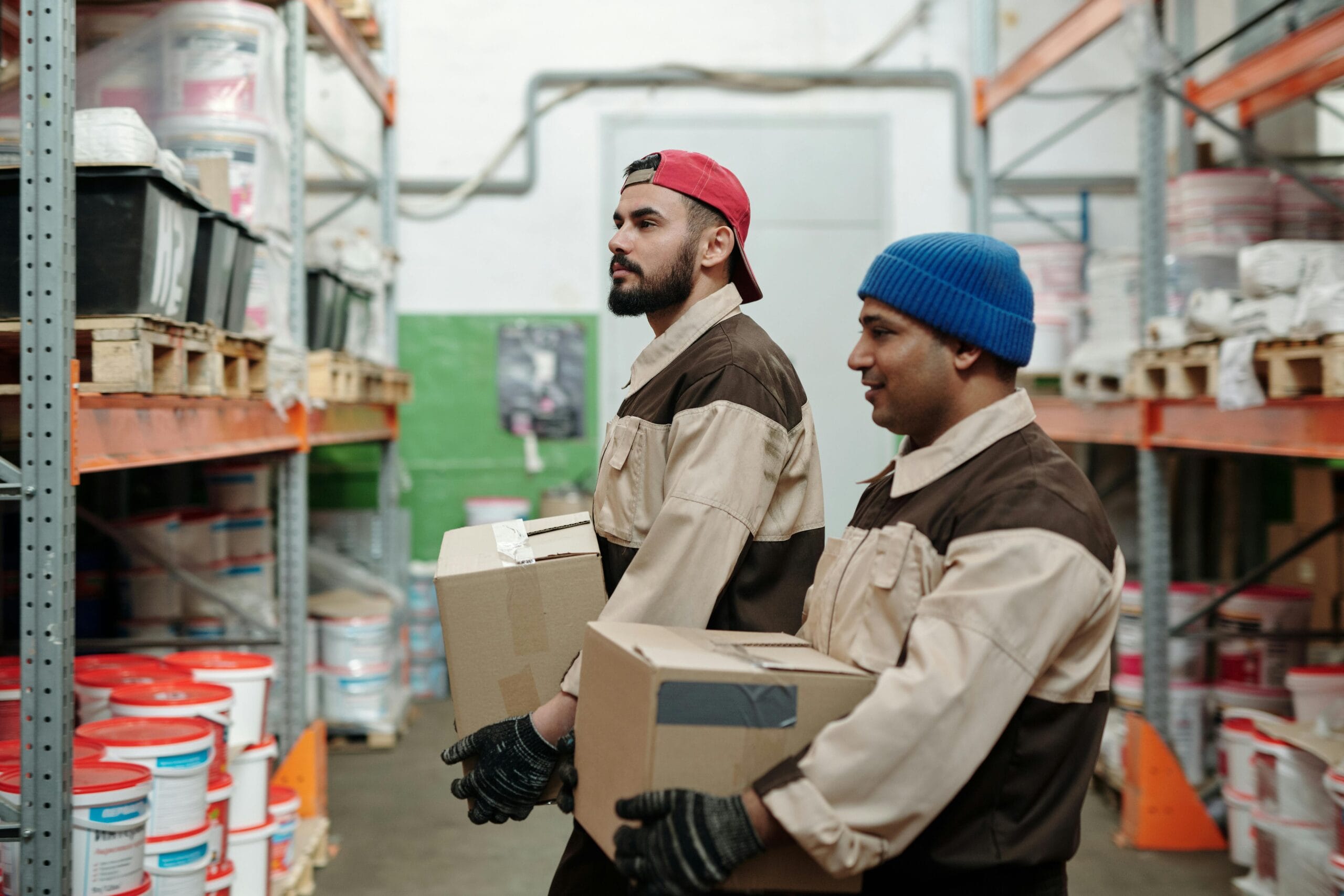
In warehouse environments, gloves serve as a vital layer of protection for workers, shielding their hands from a variety of common risks encountered during daily operations. These risks can include sharp edges on tools or materials, abrasive surfaces, exposure to hazardous chemicals, and repetitive strain caused by handling heavy or awkward items. By using appropriate gloves, workers not only ensure their safety but also enhance their overall efficiency and comfort while on the job.
Primary Uses of Warehouse Gloves:
-
Preventing Cuts and Punctures:
Warehouse gloves act as a barrier against sharp tools, jagged materials, and potential punctures from nails, screws, or splinters, reducing the risk of serious hand injuries. -
Enhancing Grip and Reducing Fatigue:
Designed with textured surfaces or grip-enhancing materials, these gloves provide workers with better control when lifting or operating machinery, while also minimizing strain on their hands during prolonged tasks. -
Protecting Against Chemical and Temperature Hazards:
Specialized gloves, such as those made with nitrile or neoprene, shield hands from exposure to harmful substances like cleaning agents, solvents, or extreme heat and cold, ensuring worker safety in hazardous conditions. -
Reducing Abrasions and Blisters:
For repetitive tasks, such as moving boxes or operating tools, gloves with padded or ergonomic designs help prevent blisters and skin irritation, allowing workers to maintain productivity without discomfort.
By selecting the right gloves tailored to specific tasks and hazards, workers can operate safely and efficiently, even in the most demanding warehouse environments. Proper hand protection is not just a precaution—it’s a productivity booster.
What kind of glove is best when working with hazardous materials?
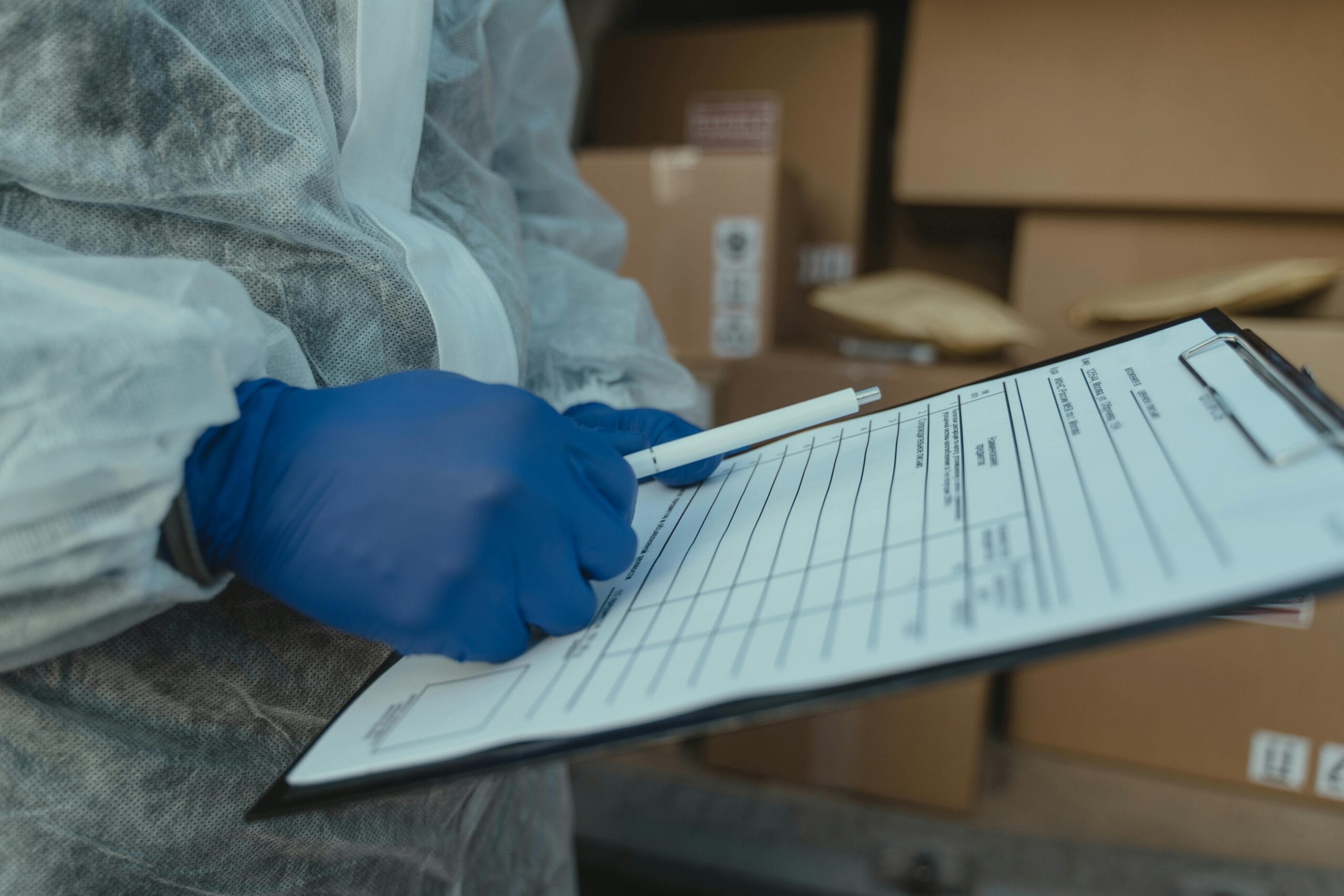
When handling hazardous materials, the use of specialized gloves is essential to ensure safety and prevent exposure to toxic substances. These gloves act as a critical barrier, providing chemical resistance and protecting the skin from harmful materials that can cause burns, irritation, or long-term health issues. Selecting the right type of gloves tailored to the specific chemicals or hazards involved is vital for both safety and compliance with workplace safety standards.
Recommended Gloves for Handling Hazardous Materials:
-
Nitrile Gloves:
- Features: Exceptional resistance to a wide range of chemicals, including oils, acids, and solvents.
- Best For: Tasks that require prolonged exposure to hazardous substances, such as laboratory work or chemical handling.
- Advantages: Durable, puncture-resistant, and provides a snug fit for precise movements.
-
Butyl Gloves:
- Features: Excellent protection against chemical vapors and gases, including industrial solvents and highly corrosive agents.
- Best For: Working with cleaning agents, industrial chemicals, or toxic gases in confined spaces.
- Advantages: Flexible and impermeable, offering high resistance to chemical degradation.
-
PVC-Coated Gloves:
- Features: Reliable protection against mild corrosive materials and wet conditions.
- Best For: Handling low-concentration chemicals, general maintenance, or tasks involving water-based solutions.
- Advantages: Durable, cost-effective, and suitable for tasks requiring grip in wet or oily conditions.
Key Considerations:
- Compatibility: Not all gloves provide universal protection. Always ensure the glove material is compatible with the chemicals you are working with.
- Durability: Select gloves with sufficient thickness and resistance to avoid tears or punctures during use.
- Comfort: Gloves should offer a balance between protection and flexibility to allow precise handling of materials.
Tip: Always refer to the material safety data sheet (MSDS) for the specific hazards associated with the materials being handled. The MSDS will provide critical information to help you choose gloves that meet the required protection levels for your tasks.
What type of personal protective gloves protect you from cuts and burns?
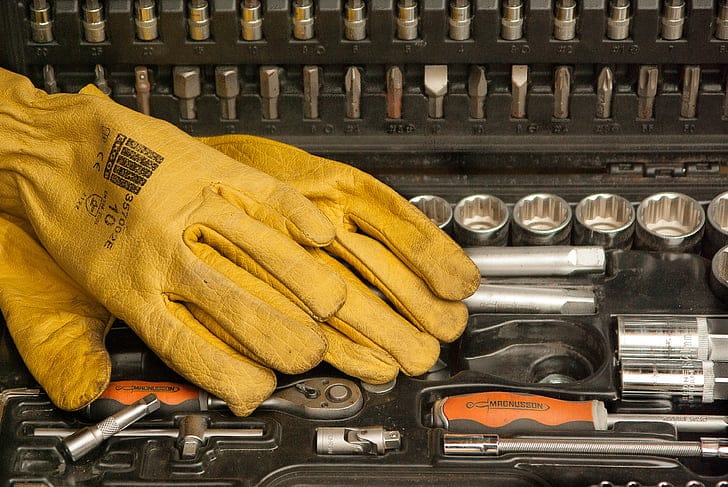
Gloves designed for protection against cuts and burns are crafted with advanced materials and innovative designs to ensure the highest levels of safety. These gloves are tailored to meet the specific demands of tasks that involve sharp objects, intense heat, or open flames, reducing the risk of severe injuries while allowing for efficient performance in challenging environments.
Gloves for Protection Against Cuts:
-
Kevlar Gloves:
- Features: Known for their exceptional cut resistance and long-lasting durability, Kevlar gloves are lightweight yet strong, providing protection against sharp edges and tools.
- Best For: Industries like construction, glass handling, and manufacturing, where workers regularly encounter sharp tools or materials.
- Advantages: High dexterity, heat resistance, and puncture protection make Kevlar a versatile choice.
-
Stainless Steel Mesh Gloves:
- Features: These gloves provide unparalleled cut resistance by incorporating interwoven stainless steel mesh, making them ideal for high-risk tasks.
- Best For: Meat processing, food preparation, and tasks involving sharp blades or knives.
- Advantages: Maximum protection without compromising flexibility for precise cutting tasks.
Gloves for Protection Against Burns:
-
Heat-Resistant Gloves:
- Features: Made from materials such as leather, aluminized fabrics, or aramids, these gloves are designed to withstand extreme temperatures and provide thermal insulation.
- Best For: Handling hot surfaces, foundry work, and applications in high-temperature environments.
- Advantages: Durable, resistant to heat degradation, and capable of withstanding prolonged exposure to high heat.
-
Flame-Resistant Gloves:
- Features: Specialized to guard against sparks, flames, and molten metal splashes, these gloves ensure maximum safety in environments with open flames.
- Best For: Welding, metalworking, and fire safety operations.
- Advantages: Flame-resistant coatings and robust construction protect against intense heat and flash fires.
Combining Features for Maximum Protection:
For tasks involving multiple hazards, such as heat and sharp tools, it’s essential to select gloves that offer a combination of protective features. For example, heat-resistant gloves with cut-resistant liners can provide dual protection for tasks like welding, where both risks are present.
Key Tips for Selecting the Right Gloves:
- Assess the Risks: Understand the specific hazards of your task, such as the level of heat or sharpness of tools, to choose gloves that meet those needs.
- Prioritize Comfort: Ensure gloves provide a snug fit and allow for dexterity to maintain efficiency during work.
- Verify Standards: Look for certifications and standards that indicate the gloves meet safety requirements for cuts or burns.
Safety and efficiency go hand in hand when the right gloves are chosen for the task, offering peace of mind and optimal performance in high-risk environments.
What is the difference between industrial and medical gloves?

The primary differences between industrial and medical gloves stem from their specific purposes, material composition, durability, and regulatory standards. These distinctions ensure that gloves meet the unique demands of their respective applications, whether in heavy-duty industrial settings or healthcare environments.
Comparing Industrial and Medical Gloves
| Aspect | Industrial Gloves | Medical Gloves |
|---|---|---|
| Purpose | Protect against mechanical, chemical, or physical risks | Prevent contamination during medical procedures |
| Materials | Nitrile, leather, neoprene, PVC | Latex, nitrile, vinyl |
| Durability | Designed for heavy-duty use, often thicker | Designed for single use, lightweight |
| Standards | Comply with OSHA and ANSI standards | Comply with FDA and ASTM standards |
| Applications | Manufacturing, construction, warehouses | Healthcare, laboratories, food handling |
Key Insight:
-
Medical Gloves:
- Prioritize sterility and touch sensitivity to minimize contamination risks and ensure precision in delicate procedures.
- Commonly disposable and lightweight, suited for single-use scenarios.
-
Industrial Gloves:
- Emphasize durability and resistance to harsh environments like chemicals, sharp objects, or abrasions.
- Built for repeated use in demanding tasks, with greater thickness and enhanced protective properties.
Selecting the right type of glove depends on the nature of the task, ensuring both safety and efficiency in the workplace or healthcare setting.
Choosing the Right Warehouse Gloves
Selecting the appropriate gloves for warehouse tasks is critical to ensuring worker safety, comfort, and efficiency. With a diverse range of hazards in a warehouse setting—such as handling sharp objects, exposure to chemicals, or repetitive strain—choosing gloves tailored to the specific risks and activities is essential. A proper fit, durable materials, and adherence to safety standards not only protect workers but also enhance productivity by reducing the risk of accidents and fatigue.
Key Factors to Consider:
-
Task-Specific Hazards:
- Identify the primary risks associated with your tasks, such as cuts, abrasions, chemical exposure, or handling heavy loads.
- Match the glove’s protective features to the hazards. For instance, cut-resistant gloves are ideal for handling sharp objects, while chemical-resistant gloves are essential for dealing with hazardous substances.
-
Material Durability:
- The material of the glove should withstand the specific demands of the job.
- Leather or synthetic materials offer durability for heavy lifting, while nitrile or PVC gloves provide protection against chemical exposure.
-
Proper Fit and Comfort:
- Ill-fitting gloves can hinder productivity and lead to discomfort or injuries. Choose gloves that provide a snug yet flexible fit to allow dexterity during tasks.
- Ergonomically designed gloves with padded palms or breathable materials can reduce hand fatigue during long shifts.
-
Safety Standards Compliance:
- Ensure the gloves meet industry safety standards, such as EN 388 for cut resistance or OSHA guidelines for protective equipment. Certification labels indicate the glove’s suitability for specific tasks.
-
Environmental Considerations:
- For cold storage or freezer environments, insulated gloves provide protection against extreme temperatures.
- In wet or oily conditions, textured grip gloves improve handling and reduce the risk of slipping.
Pro Tip:
Regularly inspect and replace gloves to maintain their protective capabilities. Worn-out gloves can compromise safety, so ensure proper storage and care to extend their lifespan.
By carefully evaluating the specific needs of your warehouse operations and choosing gloves that address those requirements, you can create a safer, more efficient work environment.
Zion Zhang
Recent Posts
 Building a Hi-Vis Uniform Program: Compliance, Branding, and Worker Buy-In2025年7月5日You’ve got hi-vis gear. But do you have a hi-vis system? If […]
Building a Hi-Vis Uniform Program: Compliance, Branding, and Worker Buy-In2025年7月5日You’ve got hi-vis gear. But do you have a hi-vis system? If […]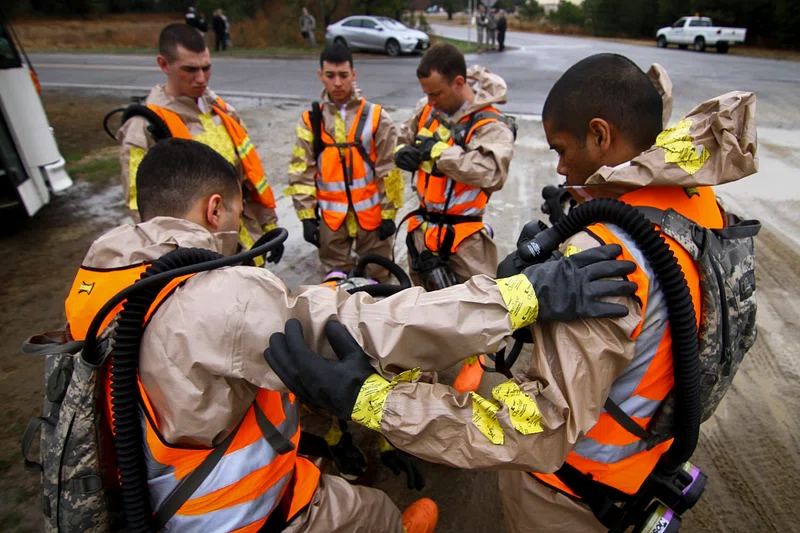 When to Replace Your Hi-Vis Garment: Fading, Damage, and Compliance Risks2025年7月5日That hi-vis vest might still look “fine”—but is it still […]
When to Replace Your Hi-Vis Garment: Fading, Damage, and Compliance Risks2025年7月5日That hi-vis vest might still look “fine”—but is it still […] Hi-Vis Clothing for Women and Diverse Body Types: Fit, Safety, and Comfort2025年7月5日A safety vest that rides up. Sleeves too long to work. […]
Hi-Vis Clothing for Women and Diverse Body Types: Fit, Safety, and Comfort2025年7月5日A safety vest that rides up. Sleeves too long to work. […] Customizing Hi-Vis Gear: Logos, Colors, Language, and Safety Messaging2025年7月5日Hi-vis clothing isn’t just for safety—it’s also part of […]
Customizing Hi-Vis Gear: Logos, Colors, Language, and Safety Messaging2025年7月5日Hi-vis clothing isn’t just for safety—it’s also part of […] Reflective Tape Placement: The Science Behind Being Seen2025年7月5日It’s not just the color that keeps workers visible—it’s the […]
Reflective Tape Placement: The Science Behind Being Seen2025年7月5日It’s not just the color that keeps workers visible—it’s the […] Layering Hi-Vis Workwear for All Seasons: Summer, Winter, and Rain2025年7月4日Hi-vis clothing can’t just protect you—it has to adapt to […]
Layering Hi-Vis Workwear for All Seasons: Summer, Winter, and Rain2025年7月4日Hi-vis clothing can’t just protect you—it has to adapt to […]
CONTACT US
- Feel free to contact us any time. We will get back to you as soon as we can!
- +86-17330061805
